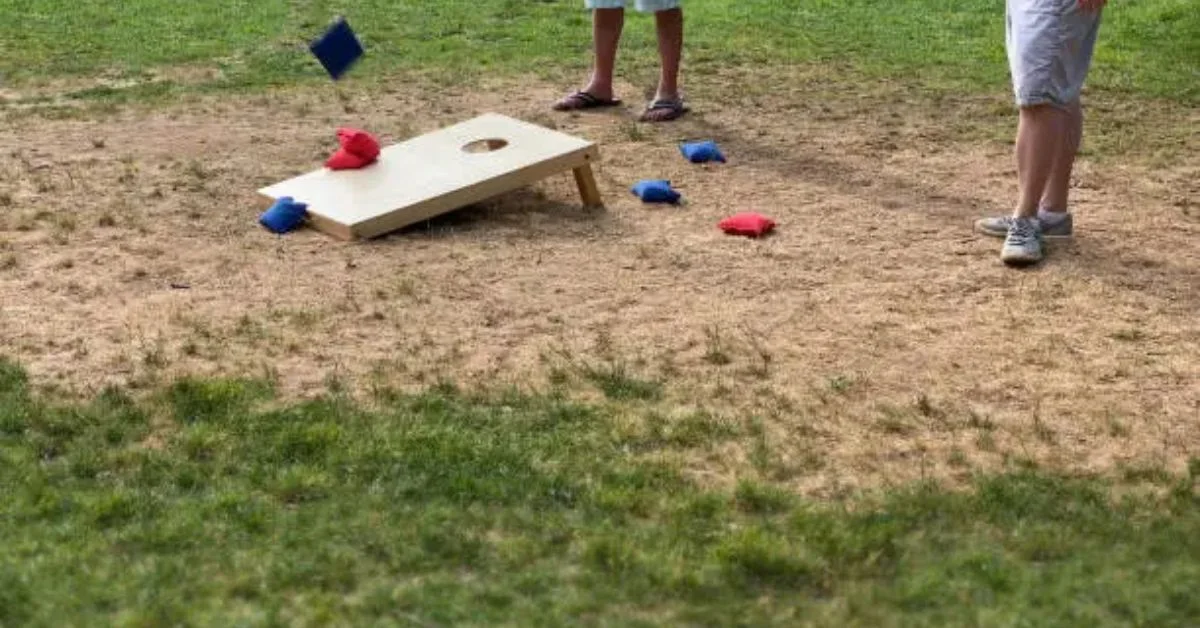Cornhole and Baggo—two games, one passion. Whether it’s a weekend barbecue, tailgating event, or a professional tournament, these two similar yet distinct games have carved out a unique space in American leisure. But what exactly are they? Are they the same thing? And how do you play them properly?
This guide is designed to answer the most pressing questions: What is Cornhole Baggo? How is it played, how are the rules different, and what gear do you need? In the next few thousand words, you’ll get a clear understanding of both games—their history, play style, equipment, scoring, and strategy, as well as insights into which version suits different kinds of players.
What is Cornhole Baggo? Understanding the Basics
The terms “Cornhole” and “Baggo” are often used interchangeably, but they refer to two closely related games with slight yet important differences. Both involve throwing bags toward a raised board with a hole in it. The objective is simple: get the bag on the board or, even better, in the hole.
- Cornhole is the traditional version, more widely recognized and played competitively across the U.S.
- Baggo is a trademarked variant of the game, often used for casual backyard games, and is marketed with its own branded boards and bags.
In essence, Cornhole Baggo represents the blend of both styles, often adopted by casual players who don’t strictly adhere to one format. If you’re playing at a family reunion or a tailgate party, chances are you’re playing some hybrid form of Cornhole Baggo.
A Brief History of the Game
Cornhole
The origins of Cornhole are debated. Some say it began in 14th-century Germany, while others credit Cincinnati, Ohio, in the early 20th century. Regardless of where it started, Cornhole has grown from humble backyard roots into a regulated sport, complete with national leagues, sponsorships, and televised championships.
Baggo
Baggo emerged as a branded version of Cornhole in the 1990s. Developed with portability and ease in mind, Baggo boards are lighter, often made of plastic, and come with foldable legs and internal storage for the bags.
While Cornhole has a rustic, traditional feel, Baggo leans toward convenience and travel-readiness—making it ideal for parties, camping trips, and casual gatherings.
The Equipment: Cornhole vs. Baggo
Understanding the difference in equipment is crucial if you want to play either game accurately or host a game yourself.
Cornhole Equipment
- Board Dimensions: 48 inches long by 24 inches wide
- Hole Size: 6 inches in diameter, centered 9 inches from the top
- Board Height: 12 inches at the back, 3-4 inches at the front
- Bag Weight: 16 oz
- Bag Size: 6 x 6 inches
- Filling: Traditionally dried corn kernels; modern versions use resin pellets
Baggo Equipment
- Board Dimensions: 36 inches long by 24 inches wide
- Hole Size: Also 6 inches in diameter
- Board Height: Around 10 inches
- Bag Weight: 9-10 oz
- Bag Size: 6 x 6 inches
- Filling: Plastic pellets
Key Takeaway: Cornhole is heavier, more durable, and designed for permanence. Baggo is lighter, portable, and more recreational.
Game Rules: Similarities and Distinctions
Though similar in aim, Cornhole and Baggo have distinct rules that affect gameplay, strategy, and scoring.
Cornhole Rules
- Scoring:
- 3 points for a bag in the hole
- 1 point for a bag on the board
- Cancellation scoring applies (opposing scores subtract)
- Distance Between Boards: 27 feet (front to front)
- Game End: First to exactly 21 points
- Throwing Style: Players must stand behind the foul line (front of the board)
Baggo Rules
- Scoring: Same as Cornhole
- Distance Between Boards: 21 feet
- Game End: First to exactly 21, no bust
- Extra Features: Some Baggo sets come with score trackers, drink holders, and built-in lights
Fun Fact: In Baggo, if you go over 21 points, you stay at that score and keep playing until you hit 21 exactly. In Cornhole, you bust and revert to your previous score. This one rule significantly affects game strategy.
Strategy and Techniques
Despite its casual appearance, both Cornhole and Baggo reward skill, precision, and mental focus. The best players master the four-bag throw—aiming to get as many bags into the hole per round as possible.
Throw Techniques
- Flat Spin Toss: Reduces bounce and ensures accurate landing.
- High Arc Toss: Ideal for drop shots that prevent sliding off the board.
- Block Shot: Purposely place a bag in front of the hole to block your opponent.
- Airmail Shot: Directly aim for the hole without touching the board.
Psychological Strategy
- Cancellation Mind Games: Try to counter your opponent’s scoring while maximizing your own.
- Situational Aggression: Be aggressive when behind, conservative when ahead.
Whether you’re playing Cornhole or Baggo, the mental game is just as crucial as the physical one.
Tournament Play and Competitive Scene
Cornhole
Cornhole is now governed by organizations like the American Cornhole League (ACL) and the American Cornhole Organization (ACO). These leagues host local, regional, and national events, complete with rankings, cash prizes, and sponsorships.
You’ll find players wearing uniforms, using customized bags, and competing in indoor arenas watched by thousands on ESPN or YouTube.
Baggo
Baggo doesn’t have the same structured competitive scene but is hugely popular in college campuses, tailgate parties, and summer camps. Baggo tournaments are usually recreational but have grown in size and stakes, especially at corporate or charity events.
Which Game Is Right for You?
| Criteria | Cornhole | Baggo |
|---|---|---|
| Setup Time | Long | Quick |
| Portability | Low | High |
| Durability | High | Medium |
| Professional Play | Yes | Rare |
| Beginner Friendly | Moderate | Very |
| Cost | Higher | Lower |
If you’re into competitive play or custom gear, go with Cornhole. If you’re looking for portable fun and ease of play, Baggo is your go-to.
Variations and House Rules
Both games lend themselves to house rules that modify the experience for different occasions. Some examples:
- Drinking Rules: Miss a shot? Take a sip. Land all four? Everyone else drinks.
- Doubles Format: Teams of two play from opposite boards.
- Time-Limit Mode: Play for 20 minutes instead of to 21.
Cornhole Baggo, in its hybrid form, adapts to its audience, making it one of the most flexible lawn games ever created.
Educational and Social Benefits
Yes, Cornhole Baggo is fun—but it’s also surprisingly beneficial.
Educational
- Enhances hand-eye coordination
- Teaches basic physics through trajectory and force
- Encourages math skills during scoring
Social
- Builds teamwork
- Creates an inclusive space for all ages
- Breaks the ice at parties or networking events
In a world saturated with digital entertainment, Cornhole Baggo offers physical engagement and social interaction—a rare and refreshing blend.
The Modern Resurgence of Lawn Games
Post-pandemic, outdoor activities like Cornhole Baggo have seen a massive resurgence. Retailers report increased sales, and custom board makers are seeing waitlists for handmade sets. Customization—whether with a college logo, wedding monogram, or LED-light frame—has become a huge trend.
Even tech has entered the game, with smart scoring systems and apps for tracking performance, brackets, and player rankings.
In a time of digital fatigue, Cornhole Baggo represents a return to analog joy—competitive, physical, and social.
Conclusion
Cornhole Baggo is more than a lawn game—it’s an American ritual. Whether you play Cornhole with custom ACL bags or opt for a casual Baggo set at the beach, you’re engaging in a pastime that combines skill, simplicity, and social interaction.
The beauty of Cornhole Baggo lies in its adaptability. It’s one of the rare games that requires no electricity, no screen, and no age limit. It can be as competitive or as relaxed as you want it to be. Whether you’re an aspiring league champion or a backyard weekend warrior, Cornhole Baggo meets you where you are—and keeps you coming back.
FAQs
1. Are Cornhole and Baggo the same thing?
No. While they share similar rules and goals, Cornhole uses heavier, regulation-size boards and bags. Baggo is lighter, smaller, and more portable.
2. What is Cornhole Baggo?
It refers to the hybrid or general form of the bean bag toss game played casually, often blending elements of both Cornhole and Baggo.
3. Can children play Cornhole Baggo?
Absolutely. It’s a family-friendly game with no sharp objects or physical contact, suitable for children aged 5 and up.
4. How much does a Cornhole Baggo set cost?
Basic Baggo sets start at $50, while high-quality Cornhole sets can range from $150 to $400 or more depending on customization.
5. Can I build my own Cornhole Baggo board?
Yes, DIY plans are widely available. Use plywood for Cornhole or lightweight plastic for Baggo. Just follow the regulation dimensions.
For more information, click here.









